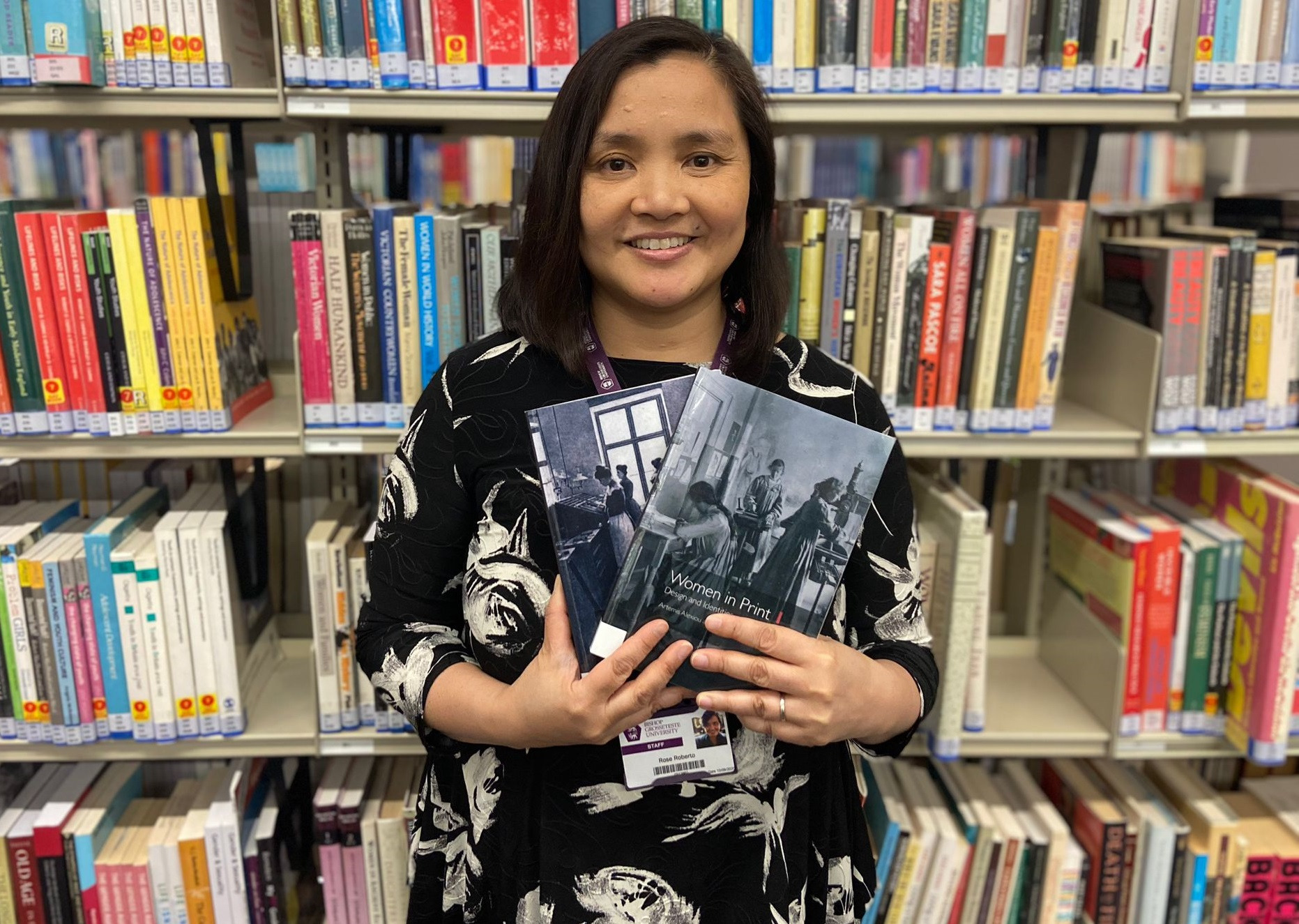Dr Rose Roberto, Lecturer for History at Bishop Grosseteste University and Teaching Resources Librarian has co-edited a two-volume collection of research on women's history named Women in Print.
The research covers the diversity of roles women played as authors, designers, producers, distributors and readers of books from the 1400s onward. To a greater extent, the history of the printing and publishing trades in the West which has been dominated by narratives of men, despite women always having been involved.
From cloistered nuns who served as scribes and illuminators for codexes we now call textbooks that were distributed in medieval university cities, to eighteenth century widows and daughters who created art and managed family engraving or printing firms, to women employed as translators, illustrators, authors and photographers during the industrial age, these two volumes, which compile the historical research of an international group of scholars setting the record straight. Women in Print, are part of the ‘Printing History and Culture’ series published by Peter Lang.
Women in Print 1: Design and Identities contains eleven chapters incorporating case studies of design aspects of a printed work, or more broadly about design issues related to the business of publishing. Edited with Artemis Alexiou (York St John University) both editors have selected chapters which focus on specific individuals and their career as female artists, compositors, editors, engravers, photographers, printers, publishers, scribes, stationers, typesetters, widows-in-business, and writers. Each chapter also offers an examination of women as active participants and contributors in the many and varied aspects of design and print culture, including the production of illustrations, typefaces, periodical layouts, photographic prints and bound works. This volume explores the visual material that they produced.
The second related volume, Women in Print 2: Production, Distribution and Consumption contains selections covering professional relationships between two or more women or a business network in which aspects of their roles in production, distribution and consumption of the printing trade are explored and further analysed. It was co-edited by Caroline Archer-Parré of Birmingham City University and Christine Moog of the Parsons School of Design in New York. Series editor John Hinks is also credited because of his work organising the conference and guiding the manuscripts through delays, mainly caused by two years of a world-wide pandemic, to publication.
Chapter 6, 'Working Women: Female Contributors to Chambers’s Encyclopaedia’, authored by Rose Roberto reflects her discovery of women writers and the exploration of archives spanning Philadelphia to Edinburgh, and London to Manchester. So far she has uncovered 25 female encyclopaedia contributors. Besides reflecting on the lives of these women and how they came to participate a transatlantic encyclopaedia project spanning more than three decades, this chapter also traces the evolving process whereby women achieved status as professionals throughout the 1800s as various fields in different trades developed. Some names in this chapter such as Florence Nightingale (1820-1910) and Millicent Garrett Fawcett (1847-1929) are familiar. Others are less-known, but just as interesting.
According to the editors of the Romantic Illustration Network (RIN), 'While most histories until the last forty to fifty years often treat women’s histories "as outstanding anomalies" in cultural and professional fields dominated by men, the aim of the scholarship in this collection . . . show that women were always present. It approaches the lives of women – and writing about their lives – as part of a process which reveals complex individual histories.'
Both volumes are available for BGU staff and students at the BGU Library. Or you can purchase your own copies at the Peter Lang website.

Previous Article
Adding more value to your recruitment
Related Posts

BGU completes Pilot of Skills Bootcamp for aspiring leaders

BGU Lecturer awarded globally recognised fellowship

BGU Senior Lecturer publishes book on children’s literature

Purr-fect calendar of campus cats raises over £700 for local cat care charity

Partner school of BGU features in local and national press for commitment to providing a safe place for pupils

Dr Tim Galsworthy provides expert comment on presidential inauguration in the United States of America
